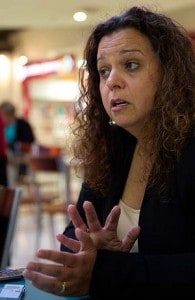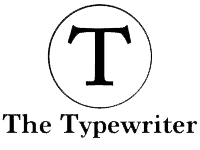
For 30 years, the federal seat of Greenway has encompassed the west and northwest region of Sydney. Named for the convict architect, Francis Greenway, the electorate is home to nearly 100,000 voters and spans the entirety of Blacktown City Council. It combines the old established working-class suburbs of Girraween, Seven Hills, Lalor Park, and Toongabbie, with new middle-class housing estates in Glenwood, Stanhope, Quakers Hill, and Kellyville Ridge.
Until 2004, Greenway had been a staunchly Labor seat, held by the largely anonymous Russell Gorman and Frank Mossfield on the back of working-class suburbs like Seven Hills. But those eight years of development resulted in an influx of middle-class voters, who elsewhere became known as the ‘Howard Battlers’ – a subset of metropolitan Australia whose personal ambition and economic desire swept John Howard to victory in four successive elections.
 Labor has struggled for relevance ever since. Though they won the seat in 2010, Labor’s Michelle Rowland only did so through an electoral redistribution that saw large Liberal-voting booths in the Hawkesbury replaced with Labor-voting booths in the south. Despite Greenway being notionally Labor, and held on a seemingly safe 5% margin, Rowland came within 1000 votes of losing to the unknown Liberal candidate Jaymes Diaz. The result itself played a huge role in keeping Tony Abbott out of government – but it also highlighted a structural shift in local politics above and beyond the vagaries of a federal election campaign.
Labor has struggled for relevance ever since. Though they won the seat in 2010, Labor’s Michelle Rowland only did so through an electoral redistribution that saw large Liberal-voting booths in the Hawkesbury replaced with Labor-voting booths in the south. Despite Greenway being notionally Labor, and held on a seemingly safe 5% margin, Rowland came within 1000 votes of losing to the unknown Liberal candidate Jaymes Diaz. The result itself played a huge role in keeping Tony Abbott out of government – but it also highlighted a structural shift in local politics above and beyond the vagaries of a federal election campaign.
In successive council, state and federal elections dating back to 2008, Labor suffered major swings against it from electors across all booths, including former strongholds in the southern suburbs of Toongabbie and Seven Hills. Part of it was down to NSW Labor and its incompetence, corruption, and party politics. Part of it was a protest vote against the Rudd-Gillard debacle. But mostly it reflected a shift in demographics from working class to middle class.
It was, in effect, a repudiation of Labor policies and ‘values’ by the middle-class; the very same group that former Labor Treasurer and Prime Minister Paul Keating had ‘created’ in the 1990s.
In short, Labor was no longer representative of these people
Current polling indicates that Labor will lose Greenway with a sizeable swing to the Liberals, and this has been largely unchanged despite Kevin Rudd’s return to the leadership. Throughout June – in the lead-up to the spill – internal Labor party polling was conducted by phone on a weekly basis, and this data was used by Michelle Rowland to justify betraying the Prime Minister. Rowland abandoned her publicly declared allegiance for Gillard and switching to Kevin Rudd because she felt that “to win the election I believed it was best to have Kevin as our leader”.
But that has not stopped Rowland from taking advantage of Gillard’s legislative and policy achievements. Nor has it stopped her from promoting that legacy as her own, despite her very minimal involvement in any of those policies and processes. Curiously though, she has not door-knocked her own electorate.
Not once in 3 years has Rowland actually made the effort to visit residents in her own suburb, including yours truly (for the record, we live barely 1 kilometre away). In fact, Rowland has almost exclusively spent her time in the Labor-voting booths of Seven Hills and Blacktown, with only the occasional foray into the Liberal-leaning Riverstone area. That being said, Rowland does have some awareness of local council issues, and has previously described cost-of-living pressures and the lack of broadband access as major issues in the electorate.
 Hypocrisy and ignorance of half her electorate aside, Rowland still has a fighting chance in this election. She is, by all accounts, a nice person – educated, intelligent, genuinely concerned about local issues, and always willing to engage with the community. Her ethnic background allows her to relate with the local minorities, and she has a solid understanding of local issues such as transport, education and cost-of-living pressures, having lived here since 1998. However, such is the anti-Labor sentiment across much of Greenway that, against an educated, informed candidate with good people skills and the ability to engage the public, Rowland would lose badly. Her luck in 2013 is that she once again faces an opponent who is anything but – the Liberals’ Jaymes Diaz.
Hypocrisy and ignorance of half her electorate aside, Rowland still has a fighting chance in this election. She is, by all accounts, a nice person – educated, intelligent, genuinely concerned about local issues, and always willing to engage with the community. Her ethnic background allows her to relate with the local minorities, and she has a solid understanding of local issues such as transport, education and cost-of-living pressures, having lived here since 1998. However, such is the anti-Labor sentiment across much of Greenway that, against an educated, informed candidate with good people skills and the ability to engage the public, Rowland would lose badly. Her luck in 2013 is that she once again faces an opponent who is anything but – the Liberals’ Jaymes Diaz.
Jaymes Diaz?
It speaks volumes that Tony Abbott himself did not want Jaymes Diaz to be his candidate in Greenway. Pre-selection was delayed so the Liberals could find an alternative, high-profile candidate to run in place of Diaz, who ultimately got the party’s endorsement through strong Filipino support in local branches. Unable to shake off allegations of branch-stacking, Diaz then created the moment of the campaign by stuttering his way through an excruciating interview with the Ten Network’s John Hill.
This viral video showed a clearly out-of-his-depth Diaz unable to answer any question asked by reporter Hill. The questions were innocuous and basic, focusing on the bare essentials of the Coalition’s policies on climate change, company tax, and asylum seekers. But Diaz could not respond coherently, or recite the six point asylum seeker plan, despite clutching in his arms the ‘Real Solutions’ pamphlet that contained all the answers.
Since then, Diaz has been keeping such a low profile that Labor has created the Twitter hashtag ‘#wheresjaymesdiaz‘. Several newspaper and television outlets – including the Sydney Morning Herald, the local Blacktown Sun, and the Seven Network – have spent the last week trying unsuccessfully to locate Jaymes Diaz.
Their attempts to speak with him about the Coalition’s policies and his plans for Greenway have been rebuffed at every turn, and Diaz himself has been actively avoiding public functions and local ‘meet-the-candidates’ events in order to reduce public scrutiny of his party and his suitability as a candidate. It is symptomatic of a much broader small-target campaign being run by the Liberal Party, and is a worrying indication of how little accountability or benefit will be provided with Jaymes Diaz representing the constituents of

Greenway.
Locals are thus faced with Claytons choice.
[1] Vote for the incumbent, Labor’s Michelle Rowland, and re-elect a traitorous MP who betrayed a Prime Minister she publicly supported, then used their achievements to bolster her own re-election campaign.
[2] Vote for the alternative, the Liberals’ Jaymes Diaz, and elect a bumbling fool who has no experience of the local area, who struggles to answer questions on Coalition policies, and whose behaviour towards people like me is both ignorant and contemptuous. That the polling for Greenway has not changed dramatically since Kevin Rudd’s return to the leadership indicates that anti-Labor sentiment is running high enough to offset the general incompetence of Diaz, and the fact that the Liberals are now openly plotting to get rid of Diaz
The voters of Greenway deserve better than that, and would undoubtedly vote for Labor if they could provide a credible reason for doing so. After all, these people are the middle-class of Australia, the people whose prosperity, ambition and economic success was initiated by the last true Labor leader, Paul Keating. But the quality of the candidate ultimately means little; voters no longer pick their candidate of choice, but rather the party of their choice.
